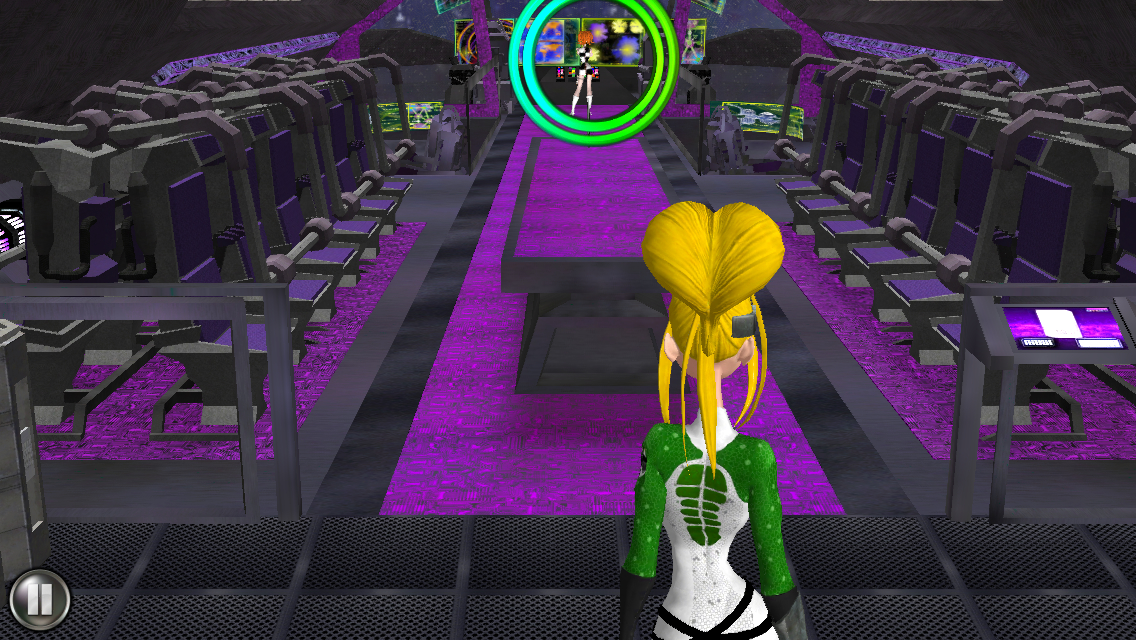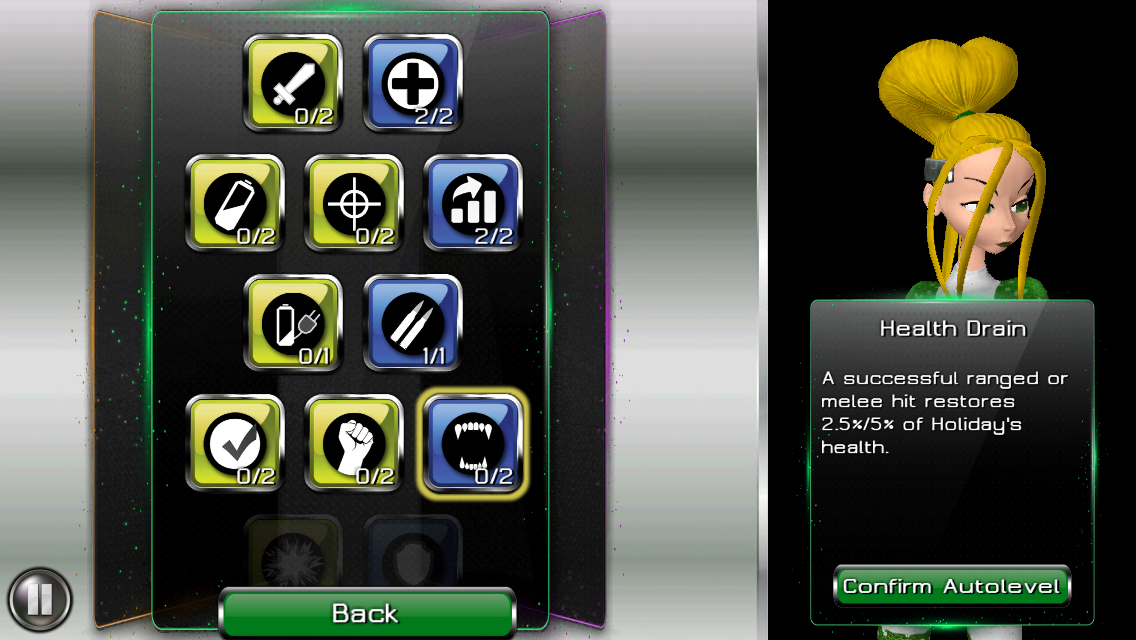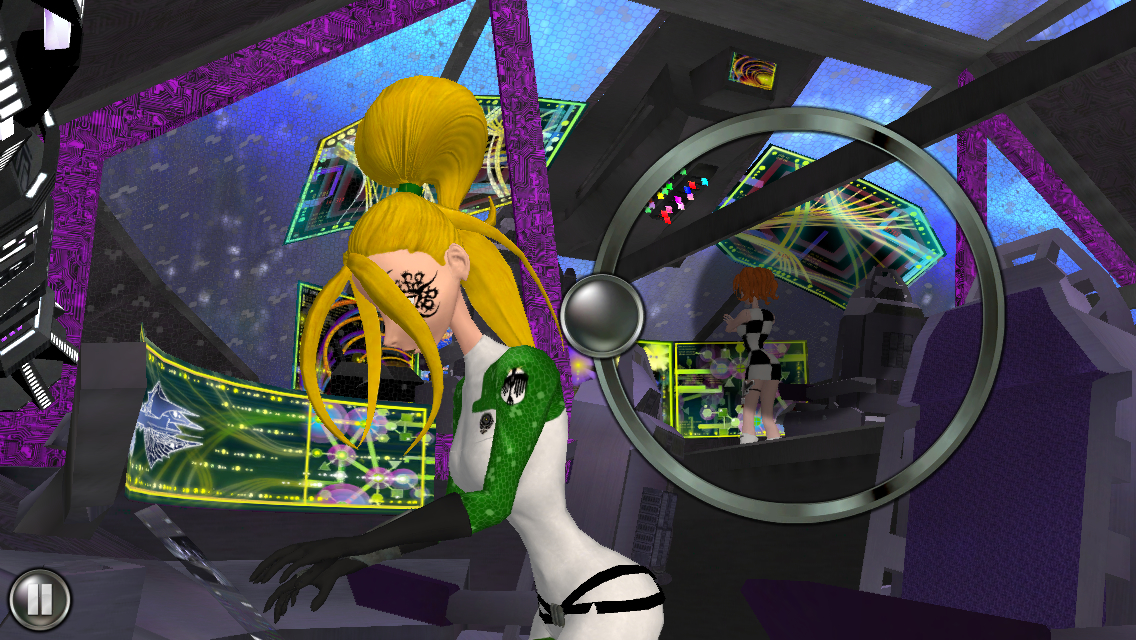![]() It wasn’t that long ago in gaming’s history where the trend was to come up with the gameplay first, and then fit whatever story you could onto it. There are still plenty of games like that, but recently, the major attention-grabbers have been games that seem to have started with a story first. While there are rare cases when things just come together beautifully, games with the former attitude tend to have stories that feel vestigial, while games of the latter type often have gameplay that feels that way. I can’t speak for the motivations of the developers of Revolution 60 (Free), but it sure feels like it’s the latter. This is a game with an intriguing plot, above average presentation, and more endings than you can shake a stick at. Unfortunately, this is also a game with an over-reliance on quick-time events (QTEs), a morality system without a hint of nuance, awful pacing, and RPG mechanics that don’t come together in a satisfying way.
It wasn’t that long ago in gaming’s history where the trend was to come up with the gameplay first, and then fit whatever story you could onto it. There are still plenty of games like that, but recently, the major attention-grabbers have been games that seem to have started with a story first. While there are rare cases when things just come together beautifully, games with the former attitude tend to have stories that feel vestigial, while games of the latter type often have gameplay that feels that way. I can’t speak for the motivations of the developers of Revolution 60 (Free), but it sure feels like it’s the latter. This is a game with an intriguing plot, above average presentation, and more endings than you can shake a stick at. Unfortunately, this is also a game with an over-reliance on quick-time events (QTEs), a morality system without a hint of nuance, awful pacing, and RPG mechanics that don’t come together in a satisfying way.
Revolution 60 has received a lot of attention for being a game largely created by women, a rarity in the video game industry. This game not only passes the Bechdel Test, it smashes it through the ceiling. The cast is entirely made up of women, and although they don’t get as much time to flesh out their personalities as I’d prefer, you do at least get a firm grasp of each character’s strengths and failings. The main character is Holiday, an assassin who works for a special black ops team. Her partner is Unknown, or Valentina, who meets with a terrible accident in the opening scene that changes her life. Their commanding officer is Minuete, who is the hard-ass boss type that always follows her orders. Rounding out the team is Amelia, a sharp-tongued scientist whose true motivations are hard to read. The four are sent on a mission to regain control of N313, an orbital weapons platform, and investigate what happened there. Things do not go according to plan.
You have a great deal of influence on where the story ends up, thanks to a dialogue system somewhat similar to Bioware’s games. Basically, the game keeps track of five parameters and unless you’ve reached a particular level in each one, certain dialogue choices will be blocked off to you. Four of these parameters are connected largely to dialogue choices. You can choose to be professional or a sarcastic jerk in many conversations, which will earn you points towards the respective professional and rogue stats. Minuete and Amelia very quickly end up at odds with each other, and you can side with one or the other in some conversations, giving you a chance to boost those stats. It’s a tried and true system, to be sure, but its implementation here leaves something to be desired. Choices are binary and transparent, so it’s really just a matter of picking which ending you want to see. Even more strangely, boosting one stat doesn’t take away from its opposite number, so you can actually waffle between the two and end up with enough points for both. From a story point of view, that’s incredibly weird, and it’s one of the ways the narrative side of Revolution 60 drops the ball.
The fifth parameter is proficiency, and you’ll beef that stat up by successfully completing the game’s many, many QTE sequences. I would go so far as to say that the majority of the game’s actual gameplay is tied up in QTEs, a dangerous design choice that few developers have safely traversed. The QTEs come in a variety of types, including simple directional swipes, drawing circles or squares, tapping when a circle moves into a particular area, and multi-touch. I get the sense that the developer tried to coordinate these with what’s happening on screen, and sometimes, such as when you’re crawling through vents or wall-jumping up a vertical shaft, they fit nicely and all is well. The rest of the time, they’re poorly telegraphed and have little connection to what’s happening on-screen. They’ll catch you by surprise frequently thanks to their inconsistency, and you don’t get to try again if you fail. The proficiency points are simply lost for good.
Besides QTEs, there are one or two simple puzzles, some light on-rails exploration, and RPG-style battles in the vein of Mega Man Battle Network. The battles are one-on-one and take place on a grid. You can move around to adjacent squares anytime you like, but your weapons have a cooldown timer, enforcing a sort of loose turn-based system. As you attack the enemy, you’ll build up a multi-leveled energy meter. At any point after you’ve charged to the first level, you can unleash a super attack on the enemy, which takes the form of a QTE sequence, naturally. The enemies, for their part, will try to corral you or close off avenues of escape. They have quite a few options as to how they can attack you, and I found myself quite envious of their range of choices. All I could really do was hop around to evade, attack straight ahead when my weapon was ready, charge up that meter to level three, and let fly with a super move. In other games that use grids like this, such as the aforementioned Battle Network or Radiant Historia, the player is given a lot of options for manipulating the grid, something that is sorely missing here.
Still, the battles do have a nice speed to them, and although most of the enemies lack bite on the lower difficulty settings, the unlockable Girlfriend Mode offers a bunch of tense fights. Unfortunately, you have to play through the game at least once on the somewhat dull normal mode to open that difficulty level. The bigger issue for the battles is that they’re all scripted events, and they’re spaced out very oddly. Sometimes you’ll go for a long time without any battles, only to face three back-to-back-to-back fights against similar opponents. You can’t seek out any extra battles, or avoid any for that matter, making the experience points the game gives you little more than a puppet show. You’ll always level up after the same fights, and you’ll always cap out at level nine. When you level up, you can put a point into your choice of skills, and you get just enough points to see one chain all the way through to the end, and not a single point more.
The rest of the game’s two hours or so of gameplay time is made up of walking through very plain corridors. You don’t directly control Holiday, but you can guide her at certain points to follow the story path or take side routes to look for items. There’s a lot of walking, and a lot of talking during that walking. Too much of it, to be honest. The middle part of the game really drags as a result, and as corridors lead to doors that open to nearly identical corridors, you’ll find yourself wishing for something to do besides listening to people talk and tapping on the occasional green circle to advance. The dialogue is a bit of a mixed bag, with a few clever bits and a whole lot of cliches, but even when it’s relying a bit too much on generic action movie lines, it still manages to keep your interest. That’s partly owing to the fact that it avoids dumping a ton of exposition and lore on you at any one time, and partly because the voice acting is quite good.
The presentation on the whole is very well done. Aside from the voice acting, the rest of the audio also stands out with great use of ambient effects and music. The animations are good, well above what I would expect from a relatively small team, and in general, the art style shines with a cool retro-future look straight out of the 1960s. The characters themselves look like action figures come to life, a similarity that unfortunately extends to their facial expressions at times. The characters have very expressive eyes, but their mouths seem to be locked in something of a fish-face pucker that keeps them from displaying much emotion. It makes the cast come off as a lot more dour than I think they’re meant to be.
The overall plot comes off well. It’s clearly intended to be a first chapter, with major sequel hooks in the ending no matter which way you finish. Yet, at the same time, it genuinely feels like a proper story that can stand on its own. It’s more Back To The Future than Back To The Future 2, if you know what I mean. It does a good enough job of filling in background details and setting up long-term hooks without sacrificing the dramatic tension of the plot at hand. I’ll admit that I wasn’t really getting into the story for the first part of the game, but the arrival of a particular character halfway through brought the whole thing to life, and the game is far richer for her presence. The story in hindsight is pretty good, and I am interested to see where it goes from here.
I guess the problem is that while I enjoyed the story and I thought the presentation was well above average for an iOS game, I didn’t actually enjoy the gameplay very much. The battles were the most fun, but even they represent a missed opportunity. With more ways to attack the enemy in battle and the ability to seek out or avoid more enemies, this part could have been more fully realized. The rest of the gameplay mechanics don’t even come off that well. The QTEs are too frequent and fussy, the exploration is too hands-off and drawn out, and the dialogue system is too limited and obvious to get much enjoyment out of. I find myself just wishing to get each moment of interactivity out of the way as fast as I can so that I can get to the next story segment, which I suppose is great news for the story, but not for the game as a whole.
If you’re more into games for stories and don’t mind QTE-dependent gameplay, you should probably check Revolution 60 out. It’s free to try, offering up a decent slice from the beginning that will give you a fairly accurate picture of the overall game. After a while, you’ll have to unlock the rest of the game via a $5.99 IAP if you want to continue. If you enjoy that free section, you’re safe to buy into the rest. That said, if you dislike QTEs or don’t care much about the stories in games, you’re better off avoiding this revolution. There’s not enough RPG here for RPG fans, not enough exploration or puzzles for adventure fans, and not enough interesting dialogue choices for fans of conversation-heavy games. Revolution 60 would make a terrific animated movie, but as a game, I’m left a little cold by it.




